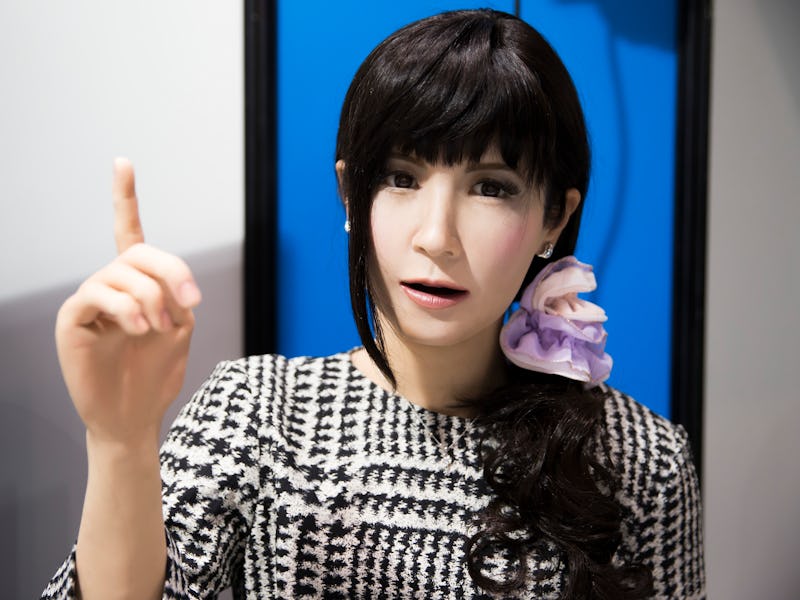Amazon Just Patented a Robot Model That Also Takes Selfies
First they came for drivers, then they came for the models.

Bad news for models: Amazon just received approval for a patent for a robotic model that can automatically adjust its proportions to best fit the clothes it is modeling. Bad news for photographers: It takes selfies.
The patent, approved Tuesday, was filed by Harry James Lewis Eakins, the lead software designer at Amazon’s device design center, Lab126, in December 2013.
The selfie-taking robot model is a reasonable patent idea for the company. Earlier this month, news broke that Amazon planned to make and sell its own yoga pants, among other trendy “athleisure” staples.
Leaving jet-setting runway and swimsuit calendar models to the side for a moment, how exactly will this development affect the rest of the modeling world? Laura VonHolle, Director of Heyman Talent Artists Agency in Cincinnati, Ohio, sums it up in a word for Inverse: “scary.”
“You could have a robot that could replace a model,” VonHolle says.
The robot model is a combination of a highly adjustable mannequin covered in pressure sensors and an intelligent camera arm. In the patent, it suggests that the camera is able to identify the most flattering poses and shots of the clothing items. The pressure sensors across the body of the model allow it to adjust its shape so the clothing doesn’t gape or crease in unflattering ways.
The fit adjustment mechanism may adjust the placement of the garment depending on the angle from which the garment is photographed. For example, a first adjustment may be made when photographing the garment from the front, while a second adjustment may be made when photographing the garment from the rear. Also, as the mannequin expands in size, the garment may shift on the mannequin; for example, the garment may ride up the mannequin’s hips in an unflattering way. A fit adjustment mechanism enables correction of this problem.
VonHolle, a talent agent for the last eight years, says the job goes non-stop. “I had a job come in at 2 a.m. last night and it’s due at 2 p.m. today,” she says. The automated model could be particularly devastating for online clothing sales, like the work that Amazon does with Amazon Gear, or its other clothing lines.
This type of retail requires a large amount of time to get all the fit images for the website. This is slightly different than modeling for magazines or on the catwalk, as you need a large number of images of fit, often in different sizes. “It’s not going to mimic a woman’s body or how a woman moves,” says VonHolle, but on these e-commerce shoots you don’t need that.
The patent compares the work of a stylist on one of these shoots today to that of the selfie-taking robot model, saying:
For example, in one test, it took a stylist manually operating a mannequin and a camera four hours to photograph a single garment under different size combinations. In contrast, it is estimated that automated garment photography as described herein enables a single employee to photograph 3000-4000 pieces of clothing per year.
With those numbers, the robot model can do the work of six and a half clothing shoots in a single day. And that’s the work of a considerable number of people. In the modeling on Amazon’s clothing marketplace, most of the poses are of the model from the nose down, VonHolle explained. The number of poses for the clothes is pretty limited in that context, but you need a number of different women to try them on – a size two, a size four, and a size six for example – and the robot could replace all of them.
“That’d be great for designers,” says VonHolle, “and as far as models and talent agencies — that could definitely hurt us.”
The patent notes that at least one human will be required: The robot can’t yet put the clothes on itself.